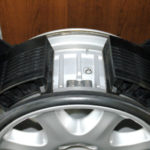Engineering Mechanics is a branch of engineering that deals with the behavior of isolated systems, as well as systems consisting of many parts. The field has several sub-divisions, each of which covers a specific aspect of mechanics. Perhaps the most significant divisions are statics and dynamics.
Statics
Statics is the study of systems in equilibrium. It is concerned with forces, their effects and their relations to each other. Forces can be grouped into three categories:
- Axes – These are lines that pass through the center of mass and are perpendicular to the plane of rotation (momentum). An axis can be thought of as an imaginary line that connects two points on an object or system (such as a rod).
- Moments – A moment is the product of force multiplied by distance from its point of application; it’s represented by an arrow pointing away from this point.
- Couples – A couple consists of equal and opposite couples acting on different points on an object or system; they’re represented by two arrows pointing toward each other at right angles
Dynamics
If you’ve taken a physics class, you know that dynamics is the study of how objects move. The motion of a body can be described by its position (where), velocity (how fast) and acceleration (how quickly).
In this section we’ll cover Newton’s laws of motion:
Strength of Materials
Strength of materials is the branch of mechanics that deals with the behavior of materials and structures under forces. It is also known as solid mechanics, but this term can cause confusion with liquid or fluid mechanics.
Strength of materials is considered as one of the most fundamental branches of mechanics and it deals with stress, strain and deformation in solids. The main objective behind strength of materials is to determine how much stress should be applied on a given material before it breaks apart into pieces or fractures completely.
In this article we will discuss:
- What Is Strength Of Materials?
- History Of Strength Of Materials
- Types Of Stress In Solids
Vibrations
Vibrations are mechanical oscillations in a system. The vibration analysis is the process of identifying and quantifying the sources of vibrations in a structure or machine, as well as identifying the effects on performance, safety and reliability. Vibration isolation systems are used when there is a need to isolate one structure from another so that they do not interact with each other. These systems may include springs, flexible bearings or mounting systems that allow for stabilization or movement without transferring vibrations into another object or structure nearby (e.g., foundation).
Vibration control can be achieved using dampers such as isolators which absorb energy from kinetic motion by converting it into thermal energy through viscoelastic deformation;spring-mass systems where an elastic element stores potential energy released during impact events; active control techniques such as feedback loops using piezoelectric transducers attached directly onto critical components within machines – these provide real time information about their current state allowing operators to take appropriate action before failure occurs
Fluid Mechanics
- Fluid mechanics is the study of fluids at rest, in motion, or interacting with each other. Fluids include liquids and gases.
- A fluid can be a liquid (like water), gas (like air), or a mixture of both.
- A substance that flows easily and takes the shape of its container is called a fluid.
Thermodynamics
Thermodynamics is the study of heat and its relation to energy, work and the laws of physics. It is a branch of physics that studies the effects of changes in temperature, pressure, and volume in systems.[1] The word thermodynamics was coined in 1834 by Irish scientist Sir William Thomson (Lord Kelvin) from Greek roots meaning “power” (thermos) and “movement” (dynamics).[2][3]
Mechanics
Mechanics is the study of forces and their effect on motion. It is one of the oldest branches of physics, and it’s main focus is on how external forces affect objects in motion (or at rest).
The other major focus for mechanics is on the study of motion itself, which includes Newton’s laws of motion and other principles like momentum conservation.
Now that you know the basics of engineering mechanics, it’s time to get started. Whether you want to learn more about statics or vibrations, this list will help you find the right resources and study guides. We hope that our guide on how to study for this exam was helpful as well! Good luck!











